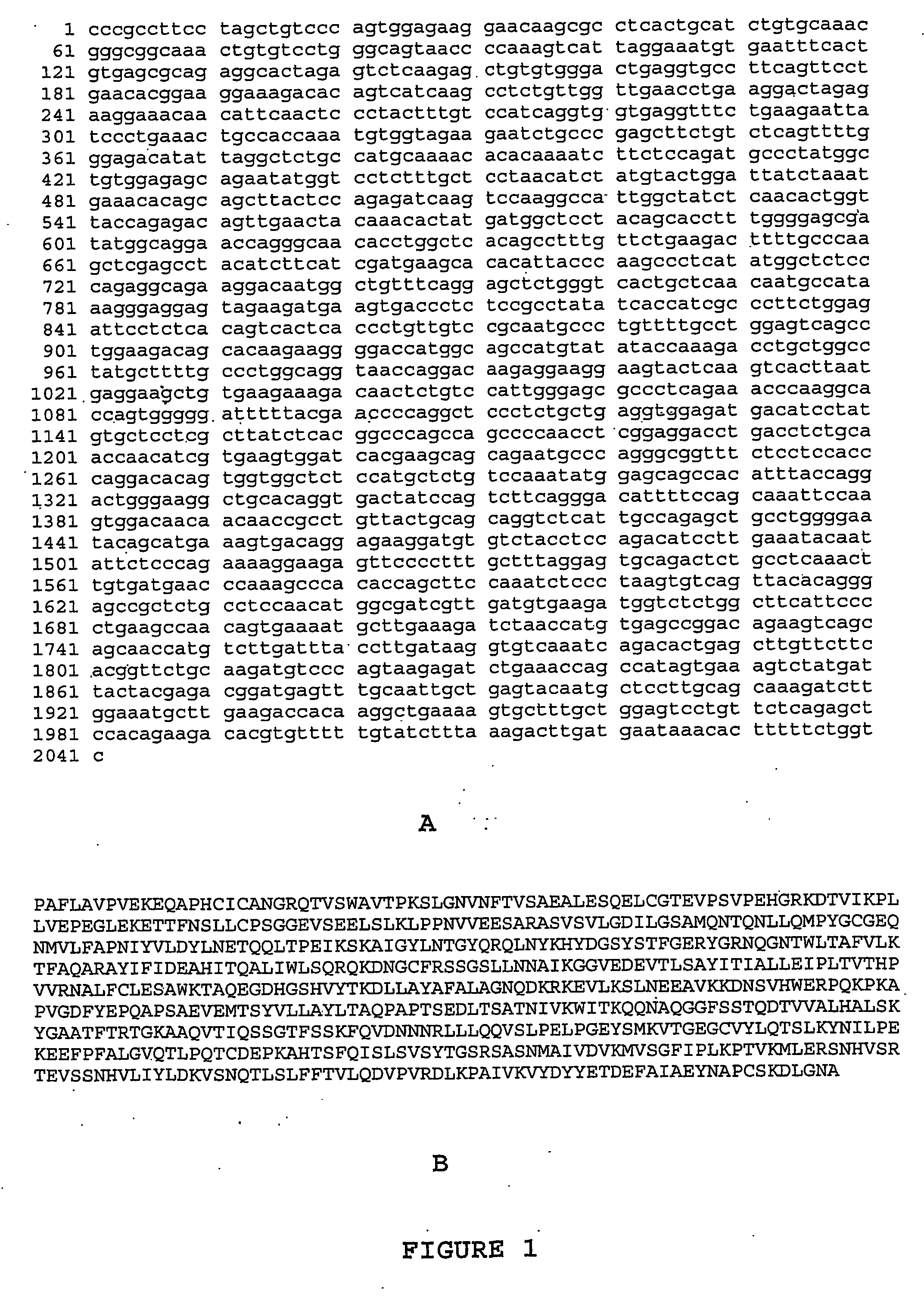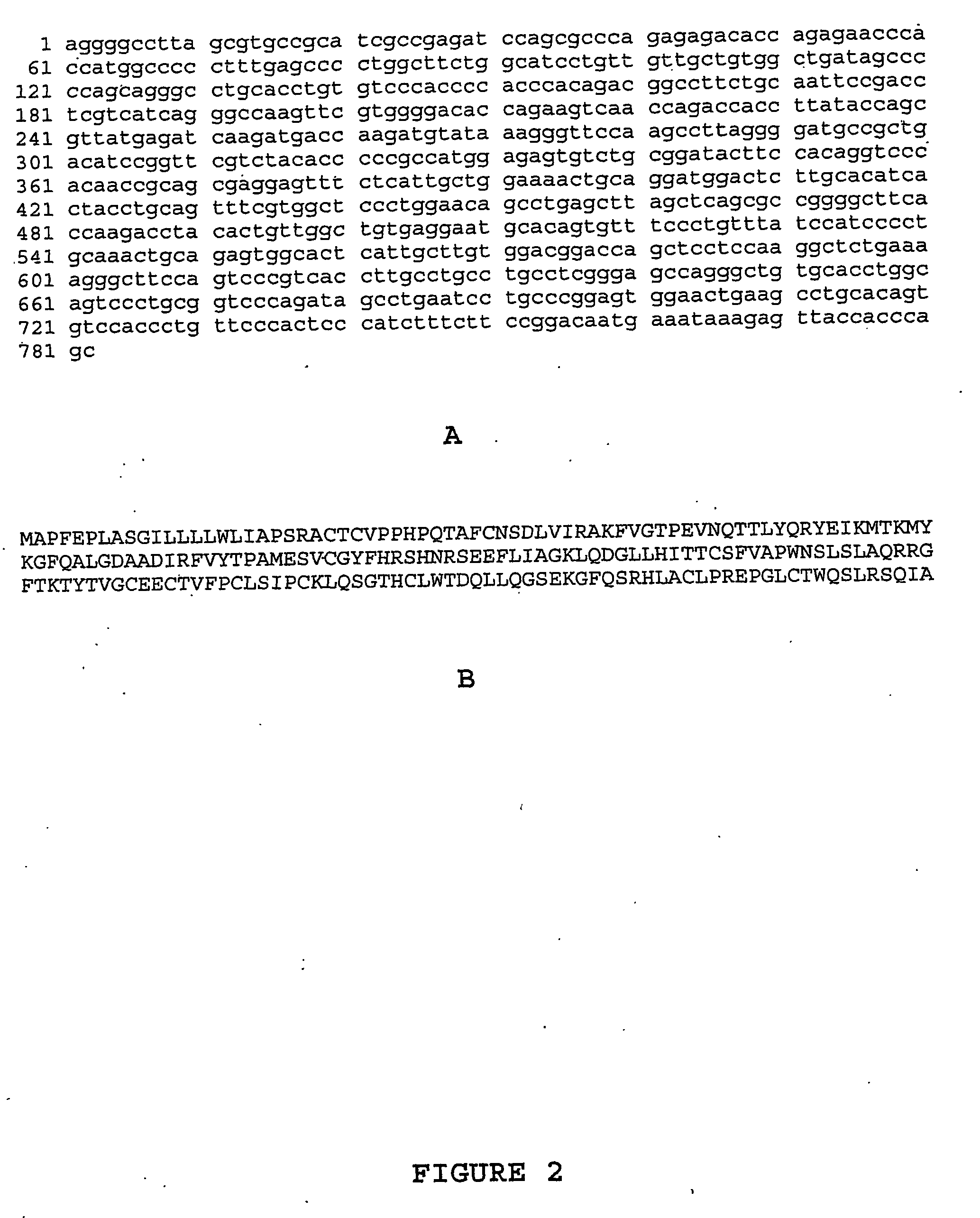Methods of diagnosing liver fibrosis
a liver fibrosis and fibrosis technology, applied in the field of methods, can solve the problems of organ failure, cirrhosis, and eventually end-stage liver disease or cancer, and achieve the effect of convenient optimization of cut-off values
- Summary
- Abstract
- Description
- Claims
- Application Information
AI Technical Summary
Benefits of technology
Problems solved by technology
Method used
Image
Examples
example i
Marker Panels for Non-Invasive Diagnosis of Liver Fibrosis
[0133] This example demonstrates that several serological markers can be combined together as a panel which is useful in differentiating fibrosis stages F2, F3 and F4 from stages F0 and F1 in HCV-infected patients.
[0134] Serum samples from 194 HCV patients positive for hepatitis C virus by RNA and immuno-analysis and having elevated alanine aminotransferase (ALT) levels were chosen at random from an existing serum library. Each of the patients had had a liver biopsy as part of their care. Patient samples were chosen to allow comparison of other routine blood markers and physical examination results attendant to routine medical care, including HCV viral load.
[0135] The inclusion criteria for the study were that the patient 1) have a confirmed hepatitis C infection at the time of liver biopsy and serum draw; 2) have undergone a liver biopsy as part of their medical care independent of the study; and 3) have previously given ...
example ii
Dual Optimization Strategy for Analysis of the α2-MG / HA / TIMP Three-Marker Panel
[0152] This example describes the use of multiple cut-offs for α2-MG-, HA- and TIMP-1 to achieve a relatively high degree of accuracy in a subset of a total patient population assayed.
[0153] Using the three-marker panel α2-MG / HA / TIMP-1 with cutoffs for α2-MG, HA- and TIMP-1 set at 35 ng / ml, 2 mg / ml, and 1000 ng / ml, respectively, samples were determined to be positive when all three of their variables were above the cut-off values, and were therefore negative when one or more of the α2-MG, HA or TIMP-1 levels were below the assigned cut-off value. As shown in Table 7, in the 194 patient population, there were a total of 72 negative results, 15 of which were false negatives, giving a negative predictive value (NPV) of 79% at the study prevalence of about 60% fibrosis %. At a prevalence of 30%, which is typical of the prevalence in a hepatology clinic, the negative predictive value is over 92%, which is us...
example iii
Assays for α2-Macroglobulin, Hyaluronic Acid and Tissue Inhibitor of Metalloproteinases-1
A. Quantitation of Human α2-Macroglobulin (α2-MG)
[0160] Serum levels of human α2-macroglobulin were quantitated using the Beckman Array® 360 System as follows to determine α2-MG levels in the range of 0.75-270 mg / ml.
[0161] The Beckman Array® 360 system was used for determination of α2-MG concentrations. This system utilizes a nephelometer which measures the rate of light-scatter formation resulting from an immunoprecipitation reaction between α2-MG antigen in a sample with antibody to human α2-MG. After passing a beam of light through the solution in a flow cell, the intensity of light scattered by the formed macromolecular particles of insoluble complexes suspended in solution is detected and measured by the nephelometer. The increase in light scatter resulting from the antigen-antibody reaction is converted to a peak rate signal proportional to the α2-MG concentration in the sample. The re...
PUM
| Property | Measurement | Unit |
|---|---|---|
| pH | aaaaa | aaaaa |
| pH | aaaaa | aaaaa |
| thick | aaaaa | aaaaa |
Abstract
Description
Claims
Application Information
 Login to View More
Login to View More - R&D
- Intellectual Property
- Life Sciences
- Materials
- Tech Scout
- Unparalleled Data Quality
- Higher Quality Content
- 60% Fewer Hallucinations
Browse by: Latest US Patents, China's latest patents, Technical Efficacy Thesaurus, Application Domain, Technology Topic, Popular Technical Reports.
© 2025 PatSnap. All rights reserved.Legal|Privacy policy|Modern Slavery Act Transparency Statement|Sitemap|About US| Contact US: help@patsnap.com


